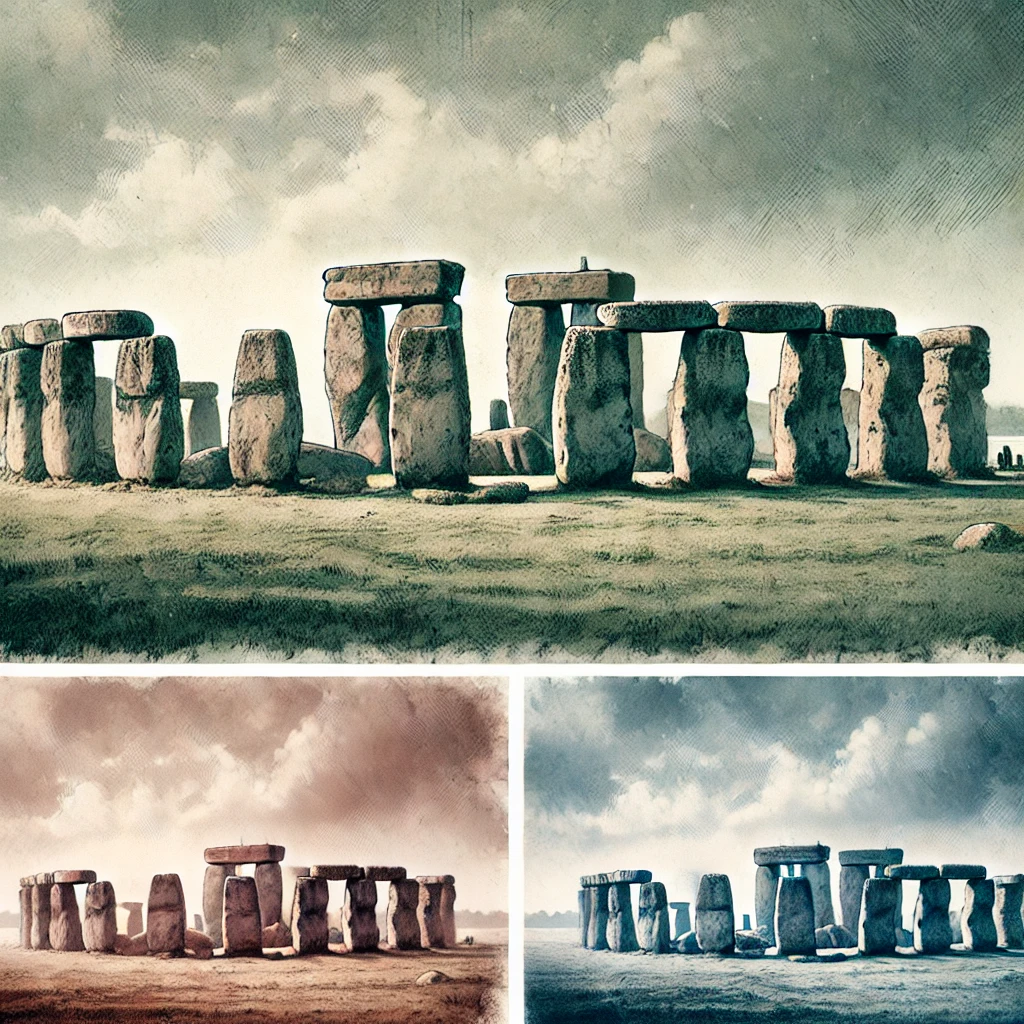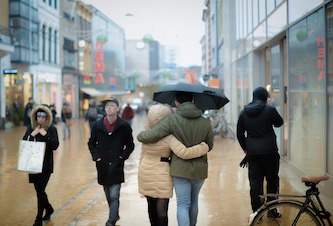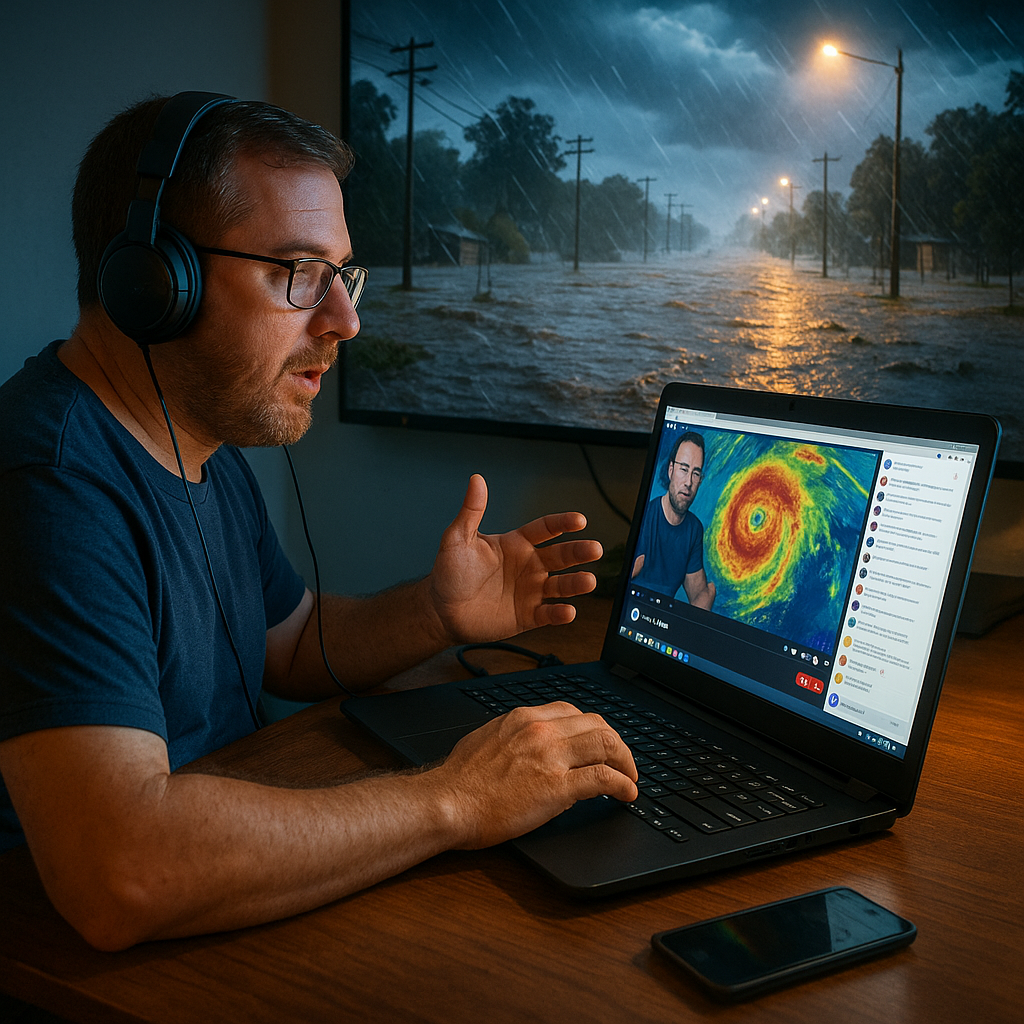Scientists found out that a big stone at Stonehenge came from the north of Scotland. Before, people thought it was from south-west Wales. This shows that people from different parts of Great Britain worked together to build Stonehenge. It means they were more connected and advanced than we thought.
The discovery surprised many researchers. A team from Curtin University in Australia studied small pieces of the stone. They found special chemicals that showed the stone came from north-east Scotland. This makes us wonder how people moved such big stones so far and why they did it.
The study helps us learn more about the people who built Stonehenge. It shows they had special ways to work together and move big stones. Scientists are now asking more questions about how they did this. The finding adds a new part to the story of Stonehenge and its importance in history.
Original news source: Famous Stonehenge stone came from Scotland not Wales (BBC)
🎧 Listen:
Slow
Normal
Fast
📖 Vocabulary:
| 1 | discovery | Finding something new or learning something you didn’t know before |
| 2 | researchers | People who study things to learn more about them |
| 3 | chemicals | Substances used in science that can change things |
| 4 | advanced | Being more developed or having more skills |
| 5 | connected | Linked or joined together |
| 6 | surprised | Feeling shocked or amazed by something unexpected |
| 7 | studied | Looked at something carefully to learn more about it |
| 8 | importance | How important or valuable something is |
| 9 | team | A group of people working together |
| 10 | special | Different or unique in a good way |
| 11 | history | The study of past events and times |
| 12 | wondering | Thinking about something and trying to understand it |
Group or Classroom Activities
Warm-up Activities:
– Vocabulary Pictionary
Instructions: Divide the class into two teams. Write down vocabulary words from the article on separate pieces of paper. One student from each team will come to the board, pick a word, and draw it without using any letters or numbers. Their team members have to guess the word. The team with the most correct guesses wins.
– News Summary
Instructions: In pairs, have students summarize the article in their own words. Encourage them to include the main idea and key details. After a few minutes, ask some pairs to share their summaries with the class.
– Headline Creation
Instructions: Ask students to work individually or in pairs to create a catchy headline for the article about Stonehenge. Remind them to include the main idea or the most surprising fact. After a few minutes, have them share their headlines with the class.
– Think-Pair-Share
Instructions: Write the following question on the board: “Why do you think it is important to study ancient monuments like Stonehenge?” Give students a few minutes to think about their answer. Then, have them discuss their thoughts with a partner. Finally, ask some pairs to share their ideas with the whole class.
– Sketch It
Instructions: Provide students with a list of key vocabulary words from the article. In pairs, one student will describe a word without saying it, while the other student tries to guess and draw it. This will reinforce vocabulary retention and encourage communication skills. Rotate roles after a few minutes.
🤔 Comprehension Questions:
1. Where did scientists discover the big stone at Stonehenge actually came from?
2. Why were researchers surprised by this discovery?
3. What did the team from Curtin University in Australia find when they studied the stone?
4. What does the discovery tell us about the people who built Stonehenge?
5. Why are scientists now asking more questions about how the big stones were moved?
6. How does this new discovery add to the story of Stonehenge?
7. What does the article say about the importance of Stonehenge in history?
Go to answers ⇩
🎧✍️ Listen and Fill in the Gaps:
Scientists found out that a big stone at Stonehenge came from the (1)______ of (2)______. Before, people thought it was from south-west (3)______. This shows that people from different parts of Great Britain worked together to build Stonehenge. It means they were more (4)______ and advanced than we thought.
The discovery surprised many researchers. A team from Curtin University in Australia studied (5)______ pieces of the (6)______. They found special chemicals that showed the stone (7)______ from north-east Scotland. This makes us wonder how people moved such big (8)______ so far and why they did it.
The study helps us learn more about the people who (9)______ Stonehenge. It shows they had special ways to work together and move big stones. Scientists are now asking more questions about how they did this. The (10)______ adds a new (11)______ to the story of Stonehenge and its (12)______ in history.
Go to answers ⇩
💬 Discussion Questions:
Students can ask a partner these questions, or discuss them as a group.
1. What do you think about people from different parts of Great Britain working together to build Stonehenge?
2. How would you feel if you had to move a big stone like the ones at Stonehenge?
3. Do you like learning about ancient history and how things were built in the past?
4. Why do you think it’s important for scientists to study and learn more about Stonehenge?
5. What is a discovery that surprised you recently?
6. How do you think people in ancient times communicated and worked together without phones or computers?
7. Do you think it’s amazing that the Stonehenge builders were able to move such big stones long distances?
8. Why do you think Stonehenge is still important today, even though it was built a long time ago?
9. How would you imagine a day in the life of someone who helped build Stonehenge?
10. Do you think teamwork is important when working on big projects like building Stonehenge? Why or why not?
11. What are some ways scientists can learn more about ancient civilizations like the Stonehenge builders?
12. How do you think the people who built Stonehenge celebrated when they finished building it?
Individual Activities
📖💭 Vocabulary Meanings:
Match each word to its meaning.
Words:
1. discovery
2. researchers
3. chemicals
4. advanced
5. connected
6. surprised
7. studied
8. importance
9. team
10. special
11. history
12. wondering
Meanings:
(A) Thinking about something and trying to understand it
(B) Feeling shocked or amazed by something unexpected
(C) Being more developed or having more skills
(D) The study of past events and times
(E) Looked at something carefully to learn more about it
(F) People who study things to learn more about them
(G) Finding something new or learning something you didn’t know before
(H) How important or valuable something is
(I) A group of people working together
(J) Linked or joined together
(K) Substances used in science that can change things
(L) Different or unique in a good way
Go to answers ⇩
🔡 Multiple Choice Questions:
1. Where did scientists discover the big stone at Stonehenge came from?
(a) South-west Wales
(b) East of England
(c) North of Scotland
(d) West of Ireland
2. What did the discovery of the stone’s origin show about the people who built Stonehenge?
(a) They were not very skilled
(b) They were from different countries
(c) They were not united
(d) They were more connected and advanced than previously thought
3. Which university’s team studied the small pieces of the stone to find out where it came from?
(a) Harvard University
(b) Oxford University
(c) Stanford University
(d) Curtin University
4. What did the special chemicals found in the stone reveal about its origin?
(a) It came from south-west Wales
(b) It came from Australia
(c) It came from north-east Scotland
(d) It came from France
5. What are scientists now wondering about how the people moved the big stones for Stonehenge?
(a) How they did it
(b) Why they did it
(c) When they did it
(d) Where they did it
6. What does the study help us learn about the people who built Stonehenge?
(a) They had special ways to work together and move big stones
(b) They were not very smart
(c) They worked alone
(d) They were not important
7. What are scientists now doing after this discovery?
(a) Ignoring the discovery
(b) Asking more questions about how the people built Stonehenge
(c) Forgetting about Stonehenge
(d) Moving the stones again
8. What does the finding of the stone’s origin add to the story of Stonehenge?
(a) Nothing
(b) A new part
(c) Confusion
(d) Sadness
Go to answers ⇩
🕵️ True or False Questions:
1. Scientists discovered that a big stone at Stonehenge actually came from north of Scotland, not south-west Wales as previously thought.
2. Scientists are now indifferent about how exactly the ancient builders transported the stones and why they went to such great lengths.
3. The discovery has shocked many people and raised questions about how ancient people transported such big stones over long distances.
4. The study provides little insight into the people who built Stonehenge and their unique ways of working together and moving large stones.
5. Researchers from Curtin University in Australia studied small pieces of the stone and found special chemicals indicating it came from north-east Scotland.
6. This finding suggests that people from different parts of Great Britain worked together to build Stonehenge, showing they were more connected and advanced than believed.
7. The finding undermines the advanced skills and cooperation of ancient people in creating monumental structures like Stonehenge.
8. This new information adds an interesting piece to the story of Stonehenge and its significance in history.
Go to answers ⇩
📝 Write a Summary:
Write a summary of this news article in two sentences.
Check your writing now with the best free AI for English writing!
Writing Questions:
Answer the following questions. Write as much as you can for each answer.
Check your answers with our free English writing assistant!
1. Where did scientists discover the big stone at Stonehenge came from?
2. Why were researchers surprised by the discovery about the stone at Stonehenge?
3. What special chemicals did the team from Curtin University find in the stone?
4. What does the discovery about the stone at Stonehenge tell us about the people who built it?
5. Why are scientists now asking more questions about how the people moved the big stones to build Stonehenge?
✅ Answers
🤔✅ Comprehension Question Answers:
1. Where did scientists discover the big stone at Stonehenge actually came from?
Scientists discovered that the big stone at Stonehenge came from north-east Scotland.
2. Why were researchers surprised by this discovery?
Researchers were surprised because they used to think the stone came from south-west Wales, but it actually came from a different place far away.
3. What did the team from Curtin University in Australia find when they studied the stone?
The team found special chemicals in the stone that showed it came from north-east Scotland.
4. What does the discovery tell us about the people who built Stonehenge?
The discovery tells us that people from different parts of Great Britain worked together to build Stonehenge, showing they were more connected and advanced than we thought.
5. Why are scientists now asking more questions about how the big stones were moved?
Scientists are asking more questions because they want to know how the people moved such big stones from far away places to build Stonehenge.
6. How does this new discovery add to the story of Stonehenge?
This new discovery adds a new part to the story of Stonehenge by showing where one of the big stones actually came from, changing what we knew before.
7. What does the article say about the importance of Stonehenge in history?
The article says Stonehenge is important in history because it shows how people in the past worked together and had special ways to build something like Stonehenge.
Go back to questions ⇧
🎧✍️✅ Listen and Fill in the Gaps Answers:
(1) north
(2) Scotland
(3) Wales
(4) connected
(5) small
(6) stone
(7) came
(8) stones
(9) built
(10) finding
(11) part
(12) importance
Go back to questions ⇧
📖💭✅ Vocabulary Meanings Answers:
1. discovery
Answer: (G) Finding something new or learning something you didn’t know before
2. researchers
Answer: (F) People who study things to learn more about them
3. chemicals
Answer: (K) Substances used in science that can change things
4. advanced
Answer: (C) Being more developed or having more skills
5. connected
Answer: (J) Linked or joined together
6. surprised
Answer: (B) Feeling shocked or amazed by something unexpected
7. studied
Answer: (E) Looked at something carefully to learn more about it
8. importance
Answer: (H) How important or valuable something is
9. team
Answer: (I) A group of people working together
10. special
Answer: (L) Different or unique in a good way
11. history
Answer: (D) The study of past events and times
12. wondering
Answer: (A) Thinking about something and trying to understand it
Go back to questions ⇧
🔡✅ Multiple Choice Answers:
1. Where did scientists discover the big stone at Stonehenge came from?
Answer: (c) North of Scotland
2. What did the discovery of the stone’s origin show about the people who built Stonehenge?
Answer: (d) They were more connected and advanced than previously thought
3. Which university’s team studied the small pieces of the stone to find out where it came from?
Answer: (d) Curtin University
4. What did the special chemicals found in the stone reveal about its origin?
Answer: (c) It came from north-east Scotland
5. What are scientists now wondering about how the people moved the big stones for Stonehenge?
Answer: (a) How they did it
6. What does the study help us learn about the people who built Stonehenge?
Answer: (a) They had special ways to work together and move big stones
7. What are scientists now doing after this discovery?
Answer: (b) Asking more questions about how the people built Stonehenge
8. What does the finding of the stone’s origin add to the story of Stonehenge?
Answer: (b) A new part
Go back to questions ⇧
🕵️✅ True or False Answers:
1. Scientists discovered that a big stone at Stonehenge actually came from north of Scotland, not south-west Wales as previously thought. (Answer: True)
2. Scientists are now indifferent about how exactly the ancient builders transported the stones and why they went to such great lengths. (Answer: False)
3. The discovery has shocked many people and raised questions about how ancient people transported such big stones over long distances. (Answer: False)
4. The study provides little insight into the people who built Stonehenge and their unique ways of working together and moving large stones. (Answer: False)
5. Researchers from Curtin University in Australia studied small pieces of the stone and found special chemicals indicating it came from north-east Scotland. (Answer: True)
6. This finding suggests that people from different parts of Great Britain worked together to build Stonehenge, showing they were more connected and advanced than believed. (Answer: True)
7. The finding undermines the advanced skills and cooperation of ancient people in creating monumental structures like Stonehenge. (Answer: False)
8. This new information adds an interesting piece to the story of Stonehenge and its significance in history. (Answer: True)
Go back to questions ⇧













